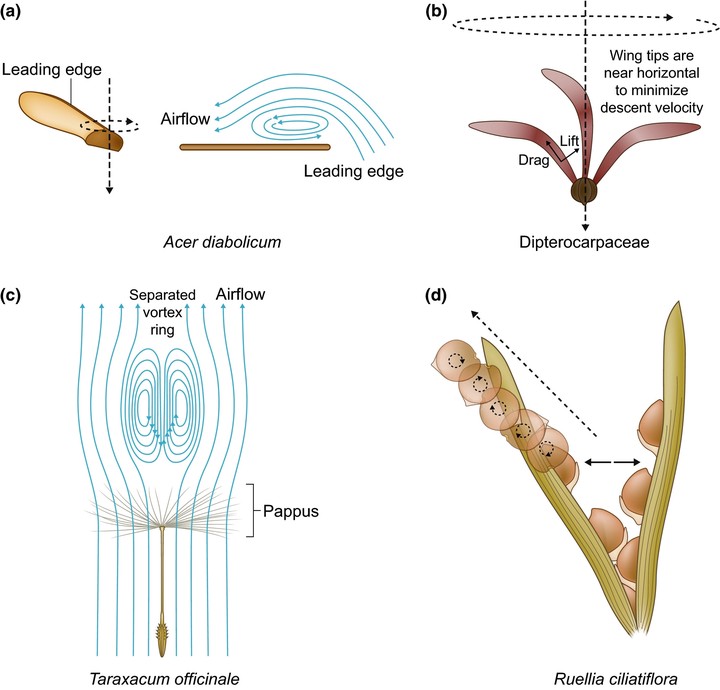 Image credit: Seale & Nakayama 2019
Image credit: Seale & Nakayama 2019
Abstract
Plant dispersal mechanisms rely on anatomical and morphological adaptations for the use of physical or biological dispersal vectors. Recently, studies of interactions between the dispersal unit and physical environment have uncovered fluid dynamic mechanisms of seed flight, protective measures against fire, and release mechanisms of explosive dispersers. Although environmental conditions generally dictate dispersal distances, plants are not purely passive players in these processes. Evidence suggests that some plants may enact informed dispersal, where dispersal‐related traits are modified according to the environment. This can occur via developmental regulation, but also on shorter timescales via structural remodelling in relation to water availability and temperature. Linking interactions between dispersal mechanisms and environmental conditions will be essential to fully understand population dynamics and distributions.